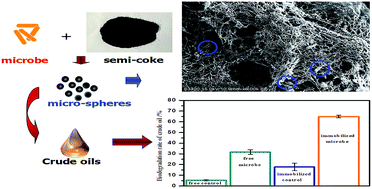Biodegradation of different petroleum hydrocarbons by free and immobilized microbial consortia
Abstract
The efficiencies of free and immobilized microbial consortia in the degradation of different types of petroleum hydrocarbons were investigated. In this study, the biodegradation rates of naphthalene, phenanthrene, pyrene and crude oil reached about 80%, 30%, 56% and 48% under the optimum environmental conditions of free microbial consortia after 7 d. We evaluated five unique co-metabolic substances with petroleum hydrocarbons, α-lactose was the best co-metabolic substance among glucose, α-lactose, soluble starch, yeast powder and urea. The orthogonal biodegradation analysis results showed that semi-coke was the best immobilized carrier followed by walnut shell and activated carbon. Meanwhile, the significance of various factors that contribute to the biodegradation of semi-coke immobilized microbial consortia followed the order of: α-lactose > semi-coke > sodium alginate > CaCl2. Moreover, the degradation rate of the immobilized microbial consortium (47%) was higher than that of a free microbial consortium (26%) under environmental conditions such as the crude oil concentration of 3 g L−1, NaCl concentration of 20 g L−1, pH at 7.2–7.4 and temperature of 25 °C after 5 d. SEM and FTIR analyses revealed that the structure of semi-coke became more porous and easily adhered to the microbial consortium; the functional groups (e.g., hydroxy and phosphate) were identified in the microbial consortium and were changed by immobilization. This study demonstrated that the ability of microbial adaptation to the environment can be improved by immobilization which expands the application fields of microbial remediation.


 Please wait while we load your content...
Please wait while we load your content...